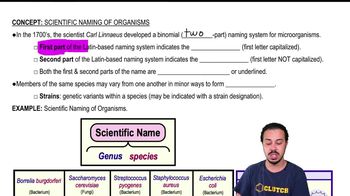Textbook Question
Complete the following table. <IMAGE>
110
views
 Verified step by step guidance
Verified step by step guidance


Complete the following table. <IMAGE>
Under what conditions can the saprophytes Aspergillus and Rhizopus cause infections?
Complete the following table:
<IMAGE>
All of the following can be transmitted by recreational (i.e., swimming) water sources except
a. amebic dysentery.
b. cholera.
c. giardiasis.
d. hepatitis B.
e. salmonellosis.
Use the following choices to answer questions 7–10:
a. Campylobacter
b. Cryptosporidium
c. Escherichia
d. Salmonella
e. Trichinella
This microbe is frequently transmitted to humans via raw eggs.
Complete the following table:
<IMAGE>